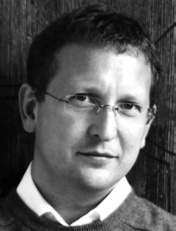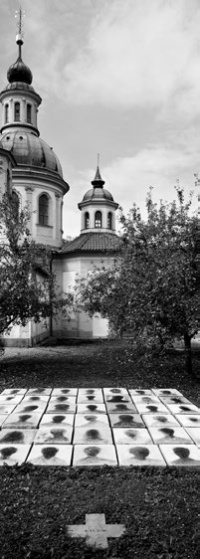
Ing. arch. Mgr. Norbert Schmidt
Norbert, at our faculty you are the director of the Centre for Theology and Arts (ctu-uk.cz). I’m looking forward to your comments on the exhortation by Pope Francis contemplating about the connection between passing on the faith and the “way of beauty”. Pope says that every local church is to support the use of art of the past and search for new symbols, “new tissue where the word can be embodied and passed on”, all this “including the unconventional modalities of beauty which can have little importance for the gospel propagator but are very attractive for others” (EG 167). How are beauty and the gospel message connected?
If we are to talk about using art to spread the gospel, I have timid feelings in this respect. If we understand, and I have to say that wrongly, Pope’s call as an effort for some kind of propaganda, just creating a suitable illustration of the doctrine of the church, it probably won’t work at all in the end. We might get to some art therapy or parish festival art, but we will not get to the core of the actual art, the actual via pulchritudinis, as it is spoken about by Pope Francis.
Could you go into more detail?
What is art? A useless activity! Artists close themselves off somewhere like monks, like philosophers, they work on something which most people do not like and do not understand at first. But artists are those who don’t give up their search. A great opportunity for the church is to accompany this search in a continuous dialogue. Pope John Paul II said that the church needed art to get a better understanding of people nowadays. Art is mainly a multivocal existential stimulus in space which brings a certain visual and content topic in it but does not have to resonate. But this is the right place for opening a new, deeper insight and there might even be the connection with the gospel you are asking about. When thinking about Pope Francis’s call, it helps me to realise that on the one hand we have here a huge heritage of Christian Art, but on the other hand nowadays, as many times before, we are at some kind of point zero, when we ask about the basics, like Christians long time ago somewhere in catacombs, and we rediscover the world of art once again.
Is it possible to give examples of art schools in the past that presented the Christian message in a good way and were not just a product of their time?
Every style reflects its time to a certain degree. You can see the political and economic background of the period in it. First of all, however, it reflects the self-understanding of Christians and the Church. But it keeps developing. Therefore, it is tricky to glorify a style and transfer it to our times. However, if we understand the principle of inculturation of the gospel, the necessity of its embodiment in a particular time and culture, we can differentiate the important from the unimportant retrospectively. Today’s task is not to discard rich traditions and beautiful things we gained from our predecessors. We must grasp them in their deepest sense and find a way how to use them nowadays. It does not mean musealisation of old buildings and objects or their copying when creating new things. When reconstructing Baroque premises, we cannot make a free-standing pseudo-Baroque students’ canteen which takes up the formal features of its surroundings but conceptually and ideologically is not connected with the interior or the form of today’s liturgy. In such cases, the form and content become separated and for perceptive people the Church becomes unplausible. It becomes a kind of museum or an island for modernity refugees. Even nowadays, we can’t do without inculturation.
How should the Church approach current art?
First of all, it is important to get to know current artists. There is nothing such as THE one current art. There are concrete works of art and concrete artists. Then it is important to recognise various qualities and the aims of the individual artists. And you can be sure that big topics (such as the purpose of existence, doubting and desire for something perfect, fascination with love and fear of death) have not disappeared from the contemporary art. Here we have a big field of mutual inspiration. Only knowledge, dialog and trust can give birth to something which survives centuries and finds its place even in the liturgical space. For example, I am quite sceptic about the situation when a tender is made for a church building, one offer is selected and built exactly according to the design on paper. None of the great constructions have been made in the whole twenty centuries of Christian history.

Patrik Hábl, Michal Rataj and Norbert Schmidt: White Mountain 2014 – an artistic intervention on the grave of the fallen from the battle of 8th November 1620, pilgrimage grounds of Our Lady Victorious, autumn 2014 (photo: Petr Neubert)What is the right way then?
An architectonic competition is used by the contractor to find a creator. Then there should be a dialogue, search and argumentation. For this, the contracting party, it means the Church, needs adequate partners at the same intellectual level and experience that have known in the long term what their purpose is, who they address, trust, oppose, or even argue with in order their work would go through fire and achieve the required purity and genuineness. All this needs time. The Church is responsible for making sure that the construction would not show any hasty decisions.
What role can and should be played in it by Catholic Theological Faculty where we learn to understand God and the Church and where the history of art is also studied?
One thing is the necessity of a scientific and competent recognition of the past. It is great that this is taught by real first-class specialists at the faculty. The second thing is an attempt for a dialogue with the contemporary authors. For that we have the Centre for Theology and Arts. In 2007 we started with lectures by foreign guests and various debates. Then we commenced our “laboratory research”, small examples of the contemporary art incorporated in the sacral area. I think that this is the advantage of the university environment: provision of a space for patient examination of current issues, relying on the theoretical background and building contacts with abroad. I see the Centre for Theology and Arts as a kind of laboratory which searches for and tests what is and what is not inspiring. I cannot imagine that our interventions in St Salvator Church and now also in other places would have been implemented without the academic support provided by Catholic Theological Faculty, which naturally requires critical thinking, consistency typical for monks and long-term observation. Thus, I believe, we can provide a kind of support, information, experience and insight in the concrete current attempts, for example to novice priests.
If a priest in church administration wants to search for new ways of beauty referring to God, what should he do?
He should learn to like his church, in the first place. He should understand it. He should recognise its strengths and weaknesses. The way of improvement is not through radical elimination of seemingly non-functional things or adding new works hastily. The way to a longer-lasting change with an impact on the parish spirituality is a way of thinking everything through slowly and consistently. A recommendation from my foreign friends not to do big things straightaway have proved useful. We should start with something small and temporary but with the maximum care as if it were a new church building constructed from scratch. We do not have to change the world but open new ways in a thought-out way.
The text was first published in DOXA, vol. 1, no. 2, May 2015, pp. 20 - 11.